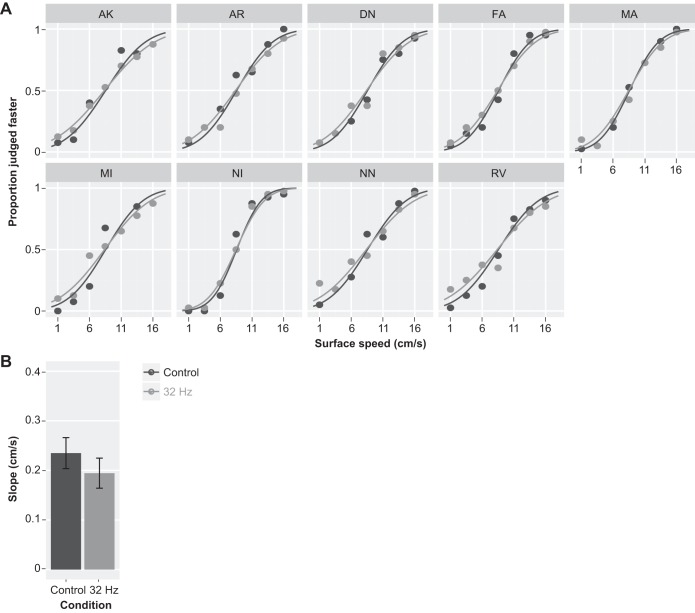Fig. 4.
Results of the speed discrimination task on the fine-textured surface with 32-Hz masking vibrations of reduced amplitude (25 μm; experiment 1b). A: individual responses with GLMM fits. Vibratory noise reduced the precision (slope) of the response similarly in all participants. B: the effect of vibratory noise (light gray) was small but significant. Vertical error bars show 95% confidence intervals.

